Day 14 8/21/2023
Portugal - Lisbon
Frank's Trip
CLICK on any image to enlarge - use mouse cursor to move enlargement it if doesn't fit area

Don't Judge a Book...
As with many places, something may appear simple and bland from the outside. Once inside complexity and splendor reveal themselves. I found this to be one of those places.
There are places I've visited here in Portugal that from the amazing outside, it is obvious they are extraordinary. Then there are the places, such as this and Igreja de Sao Rogue (Lisbon 2), that aren't much from the outside but are transcendent when the interior is revealed.
It is amazing how much time it can take to examine some of these places and still know that while seeing much, there is much that you really missed.
Igreja da Sao Vicente de Fora Monastery of Sao Vicente de Fora
The name of this monastery and church means Monastery of Saint Vincent Outside the Walls as it was originally constructed in 1147 outside the ancient walls of Lisbon. The structure we see today was built in the 17th century and construction continued until 1704. In 1755 the entire church dome collapsed from an earthquake and had to be rebuilt. The original church was in the Romanesque style but today’s church is one of the finest examples of mannerist architecture in Portugal as well as a mix of other style. The church is named in honor of Lisbon’s patron saint.
The convent and church of São Vicente de Fora are such important buildings and their historical legacy so significant to Lisbon that they have their own museum to analyze and exhibit their collection of paintings, sculptures, gold and clothing.






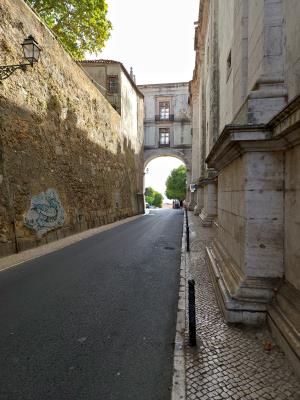








Entrance Hall
The large Entrance Hall was the first area visible to visitors to the monastery. Profusely decorated in the 18th Century in the Baroque style with a combination of rich and sumptuous tiles and painting. The decorative style of the ceiling painting was used in low-ceilinged rooms to create the illusion of higher and more ornate ceilings. The ceiling was painted with trompe d'oeil by Vicenzo Baccarelli and restored in 1796 and is the only remaining ceiling by this Florentine master. It is extremely difficult to do justice to in a photograph.

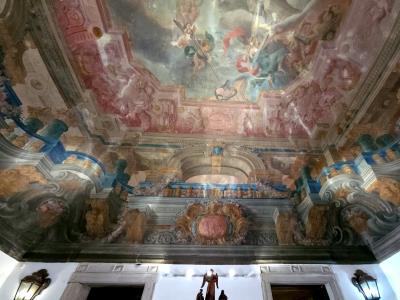

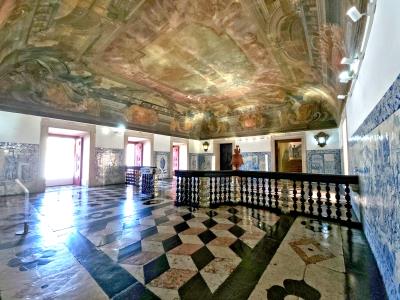


Azulejos / Tiles
The Royal patronage of Joao V led to the painting of many of the tiles in the monastery. Many are by Master Tile Painter Manuel dos Santos and produced around 1710. He was one of the Grand Masters who marked the cycle of Portuguese tiles that date from the 1st quarter of the 18th Century. All of the tiles depict stories - in this and all parts of the monastery.



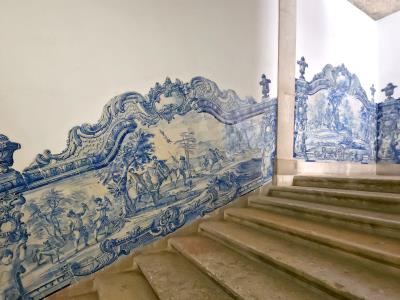





Elijah
Polychrome wood - 18th Century
Moses
Polychrome wood - 18th Century
Regina Coeli
Announcement of the Resurrection
Oil on wood - Portugal, 16th Century



Presentation of Infant Jesus in the Temple
Oil on wood - Portugal, 16th Century
Sanctuary Lamp
Silver, 18th Century
San Francisco of Assisi
Polychrome wood, 17th Century



Immaculate Conception
Oil on canvas, Portugal, 16th Century
Monstrance - gilded silver, gems, 18th century
Chalice - gilded silver, 18th Century
Cloisters
The 2 cloisters are the center of the monastery. Finished in the 17th Century according to the plans of the late 16th Century. In the decoration of the cloisters the tiles stand out. They cover the walls of the corridors of the cloisters. From the beginning of the 18th Century, there are 81 panels and a total of 14,541 tiles put in place in 1737.














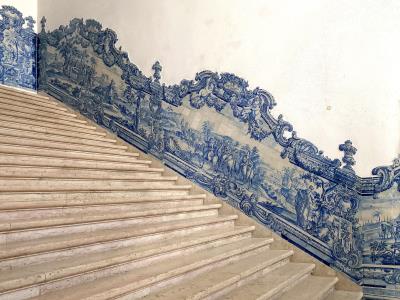

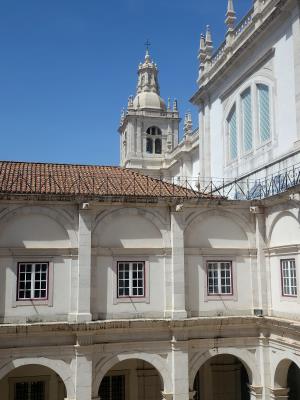


Gallery of Fables
All of the tile pictures represented stories. In addition to the ones mounted on the walls, there are 38 affixed to boards and displayed in a gallery. Each of these relates to a specific story - below are 3 and the particular stories they relate to. If you are going to look them up, use the foreign language to properly find them.
Death & the Malcontent springs from Aesop's Fables. The Iron Pot & the Clay Pot is from La Fontaine's Fables. The Wolf & the Stork is attributed to Aesop with several Eastern analogues.



"Le Pot de Terre et le Pot de Fer"
"Le Loup et la Cigogne"
"La Mort et le Malheureux"

Tumular chapel of Dom Antonio and Dom Jose, the legitimatized sons of Dom Joao V born out of wedlock.
Under the paving the hearts and viscera of some of the Kings of the 4th dynasty are buried.





Previously the Chapter Room of the monastery where the Canons met, now this room houses the tombs of the Patriarchs of Lisbon.
The title "Patriarch of Lisbon" was created in 1716 by Pope Clement XI

Pantheon of the House of Braganca
Tombs of many of the Royal Family





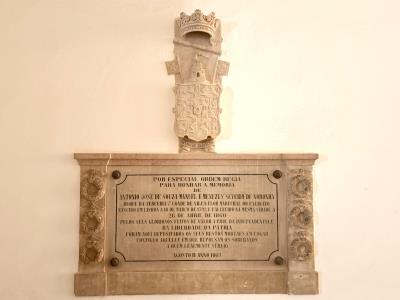



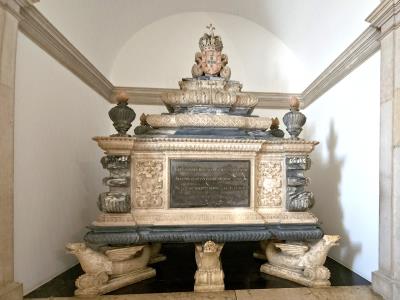




Igreja / Church
Commissioned by King Afonso I in 1147 exactly where there was established one of the Crusaders' military encampments. This early temple was dedicated to Saint Vincent - the Patron Saint of Lisbon. Affirming a new dynasty, King Filipe I decided to rebuild the monument in 1582. In 1755 much of the church was destroyed by the earthquake. The temple was then rebuilt and established the Patriarchal (1772 - 1792). In 1910 the church was declared a National Monument.








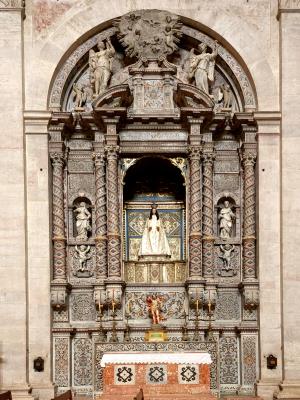



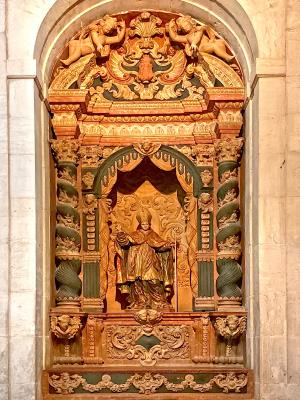













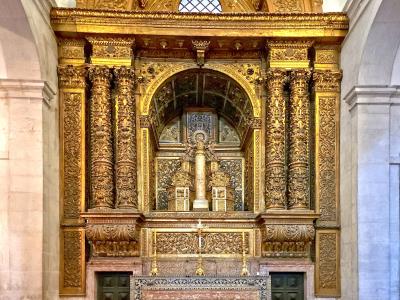
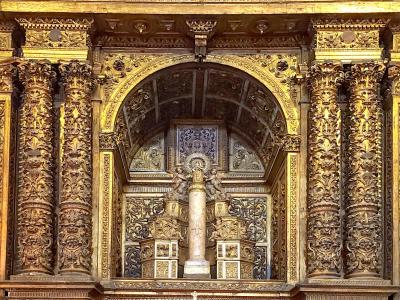
Sacristy
Here the Canons prepared for Mass and put on their vestments, it was finished in 1716.
The interior walls are completely covered in marble inlays giving an extraordinary effect.
The ceiling, rebuilt after the 1755 earthquake, is an oil painting on canvas stuck to the wood. In the center it has an Agnus Dei (Lamb of God)
Above the entrance is a high relief bust of Dom Joao V.
The sides are lined with wooden chests of Brazilian jacaranda wood that were used to keep the sacred vestments.
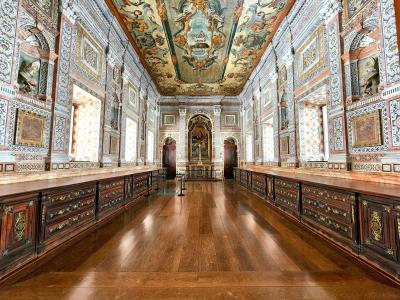













Chapel of Saint Anthony
Tradition says that here was the cell of Saint Anthony during the years in which he was a Canon Regular of Saint Augustine.
There was a tombstone on this site, to be found now within the church, that refers to this as the burial place of Dona Teresa Taveira, Saint Anthony's mother.